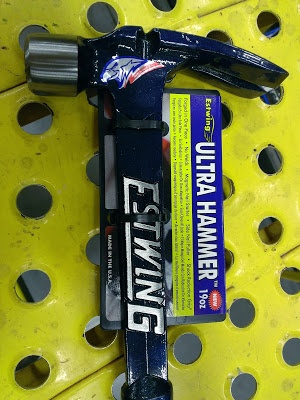“In 1898, [Charles Holland Duell] was appointed as the United States Commissioner of Patents, and held that post until 1901. In that role, he is famous for purportedly saying "Everything that can be invented has been invented."[2] However, this has been debunked as apocryphal by librarian Samuel Sass.[3] In fact, Duell said in 1902:
In my opinion, all previous advances in the various lines of invention will appear totally insignificant when compared with those which the present century will witness. I almost wish that I might live my life over again to see the wonders which are at the threshold.[4]
 “Another possible origin of this famous statement may actually be found in an earlier Patent Office Commissioner, Henry Ellsworth's 1843 report to Congress. In it Ellsworth states, "The advancement of the arts, from year to year, taxes our credulity and seems to presage the arrival of that period when human improvement must end." This quote was apparently then mispresented and attributed to Duell, who held the same office in 1899.[5]” *
“Another possible origin of this famous statement may actually be found in an earlier Patent Office Commissioner, Henry Ellsworth's 1843 report to Congress. In it Ellsworth states, "The advancement of the arts, from year to year, taxes our credulity and seems to presage the arrival of that period when human improvement must end." This quote was apparently then mispresented and attributed to Duell, who held the same office in 1899.[5]” *
Despite Henry Ellsworth’s 1843 lament of “the arrival of that period when human improvement must end,” I think we are still far, far from that time.
Consider the Following Innovations
In October of 2013, Dutch material designer Aagje Hoekstra took the armor of dead darkling beetles, which grow from larvae known as mealworms, to create the Coleoptera bioplastic that she showed at the Klokgebouw building during Dutch Design Week.
Meanwhile, The Milk of Human Kindness’s Masami Lavault has figured out a way to turn Europe’s estimated 3.7 billion gallons of annual dairy waste into biodegradable furniture (like milking stools—how appropriate!).
And, if that isn’t enough, consider this from ChemistryViews: Scientists around Alcides Leão, Sao Paulo State University, Sao Paulo, Brazil, have developed a more effective way to use fibers from pineapples, bananas, and other plants in a new generation of automotive plastics. These nano-cellulose fibers are almost as stiff as Kevlar, but are completely renewable. They are 30 percent lighter and three-to-four times stronger than plastics now in use.
What do all of these innovations have in common?
Changing the Supply Chain
While it would seem that each of these innovations is about plastics and materials, consider that these innovations actually dramatically shift the supply chain for the production of products that may use these materials.
Items that once may have been heavily reliant upon petroleum bi-products for plastics in the products themselves, or their packaging, might now be in a supply chain originating with mealworm farms or pineapples. Furniture once made from wood or petroleum-based plastics, might now be manufactured in a supply chain stemming from the waste outflow of the dairy industry.
My point is that supply chain executives and managers should not restrict their thinking with regard to innovation to what seems obvious—to changing from this supplier to that suppler; or to manage risk by looking simply at a different country of origin for components.
Rather, supply chain participants and manager should be as open to ideas about how their supply chain should operate as Aagje Hoekstra and Masami Lavault were about source of materials for the creation of new forms of plastics.
One More Example

The hammer has to be one of the oldest tools in existence today. After the invention of the iron or steel claw hammer, used commonly in the construction industry, it seems to me that innovation in hammers stagnated for many years.
Oh, yes, there were different sized hammers produced (e.g., finishing, framing) and different materials were introduced for the handles (e.g., wood, steel, fiberglass), but the basic design really did not change a lot until recently.
Over the last decade or so, real innovation in hammer design was introduced by companies like Estwing and others. These new hammers are not only designed ergonomically, but they include new features like magnetic nail holders for starting nails at arm’s length, and specialized (additional) claws for pulling smaller nails or nails in close quarters.
The Bottom Line is This
The bottom line, for me, is this: Supply chain executives and managers need to be every bit as innovative as the research and development department. In fact, in working with our clients, we try to get the whole organization involved in seeing things in new ways and, thus, opening the door to Throughput-increasing innovations (not just tweaks to what already exists).
* "Charles Holland Duell." Wikipedia. Wikimedia Foundation, 19 Nov. 2013. Web. 11 Jan. 2014.



